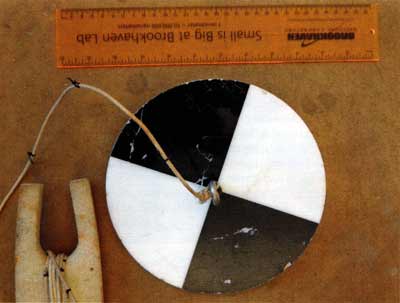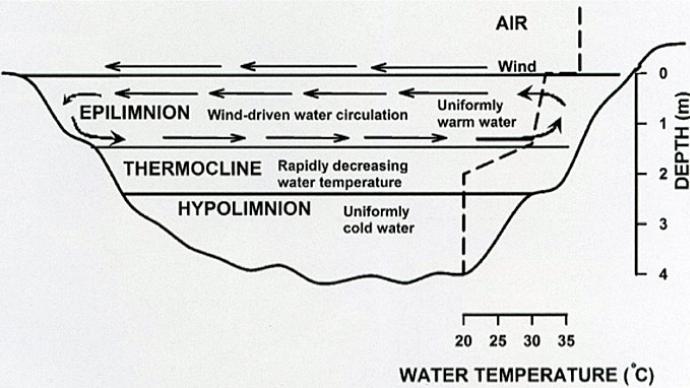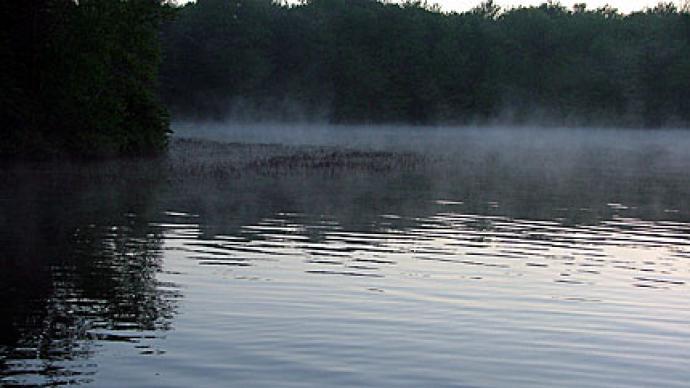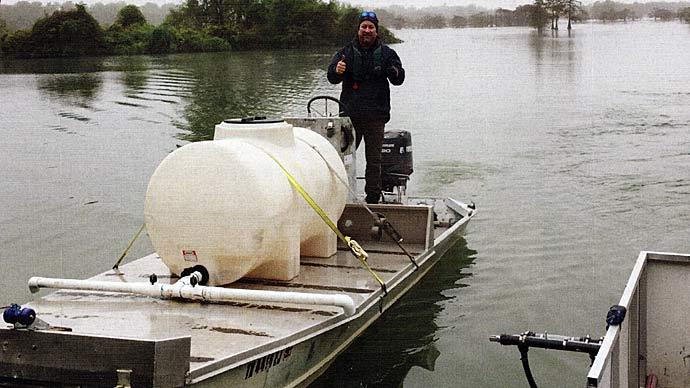
Pond owners sometimes decide to purchase devices and kits for measuring water quality in their sportfish ponds. An old adage states "one usually gets what one pays for" and this seems an appropriate comment regarding water analysis kits and instruments as there are many options for making water analyses. Test strips allow one to simply insert a strip in the water and the color change of the strip is used to indicate pH or the concentration of a particular dissolved substance. Some test kits have color wheels for determining concentrations of various water quality variables based on the intensity or hue of color that results from their reactions with pre-packaged reagents. There are small pH pens and relatively inexpensive dissolved oxygen meters and conductivity meters. Finally, one can find a scientific supply house and purchase research grade instruments for pH, dissolved oxygen, conductivity, ammonia nitrogen, and a few other variables. The accuracy (and cost) increases as you read down this paragraph.
My personal opinion of pond owner water quality analyses is that they are generally unneeded and usually inaccurate. I advise that a sample of pond water be sent to a commercial laboratory every few years and the results kept on file in case some problem develops. This analysis should be fairly complete to include at least pH, specific conductance, total alkalinity, and total hardness. Of course, if one is willing to spend a little more, an analysis of the major ions (calcium, magnesium, sodium, potassium, chloride, and sulfate) might, in a few cases, prove helpful in responding to a water quality problem.
In instances where the total alkalinity and hardness in a pond are low (below 30 mg/L) upon initial analysis, liming with agricultural limestone is indicated. In such a pond, the total alkalinity should be measured each year in late winter to see if re-liming is indicated.

Ponds in a few areas may contain considerably more alkalinity than hardness. This type of pond is vulnerable to high pH increase when phytoplankton are abundant. Such ponds usually will benefit from gypsum application to increase the total hardness to at least 50-75 mg/L. This treatment will eventually need to be repeated and annual measurements of both total alkalinity and total hardness concentration are in order.
Some ponds have greater total hardness than total alkalinity, but there usually is no reason to attempt to increase the alkalinity assuming that it is above 30-40 mg/L. Fish can tolerate high total hardness as long as the salinity does not become excessive.
The best means of preventing low dissolved oxygen is to maintain an adequate, but not excessive, phytoplankton bloom. A Secchi disk (Fig. 1) can be purchased from a scientific supply house and used to monitor underwater visibility. Underwater visibility usually is closely related to plankton abundance—the lower the underwater visibility, the greater the phytoplankton abundance. The best range for Secchi disk visibility usually is given as between 30 to 60 cm. At 30 cm, there will usually be a fairly dense abundance of phytoplankton. Of course, of all the variables mentioned so far, dissolved oxygen is the most critical one. The problem is that most pond owners have no means of aerating ponds when dissolved oxygen becomes low.
The measurement of pH can be done fairly accurately with both test strips, color wheels, and inexpensive pH meters. But I ask you, why measure a variable that may naturally fluctuate by 2-3 whole units, e.g., from 7-9 or 6-9, in surface water during a single 24-hour period? If you do not like the measured pH, it will change very soon. I suggest saving yourself the worry by not measuring pH and wondering about its effect.
The measurement of total alkalinity and total hardness with test strips is not accurate. The drop count titration kits usually will give results no closer than 10-20 mg/L. This results from the relatively large volume of one drop of the reagent used for titration. For those wanting to use such kits, the sample volume can be increased to lessen the alkalinity and hardness equivalent of 1 drop. If you double sample volume, it will half the hardness or alkalinity equivalent of each drop and double the precision of the determinations.
Interpretation of measured nutrient concentrations in fish ponds of the establishment of fertilization application rates is essentially impossible. Further, more test strips and other kits for total ammonia nitrogen, nitrate, and phosphorus analyses are notoriously inaccurate as a general rule.

In some arid areas, the salinity of ponds may be quite high, especially during drought years. The hand-held salinity refractometer (Fig. 2) available from scientific and aquaculture supply houses for a reasonable cost are sufficiently accurate for monitoring salinity. Most common pond fish will do fine up to 3-4 ppt and some can tolerate greater salinity.
Many pond owners use pond management consultants who have wide experience with pond water quality and its management. Those who have turned over their ponds to consultants for management usually have little reason to make their own analyses. Other pond owners may want to use kits to measure alkalinity and hardness, but it would be more reliable to have a state or commercial laboratory make annual analyses.
Dr. Claude Boyd is a professor emeritus in the School of Fisheries, Aquaculture and Aquatic Sciences, Auburn University, Auburn, Alabama 36849. His work with water quality is internationally renowned. His most recent book, Handbook for Aquaculture Water Quality, is a must for anyone interested in learning about water chemistry and how it relates to your pond. It's technical, thorough, but easy to read and understand. Buy it at www.pondboss.com in the online store.
Reprinted with permission from Pond Boss Magazine



